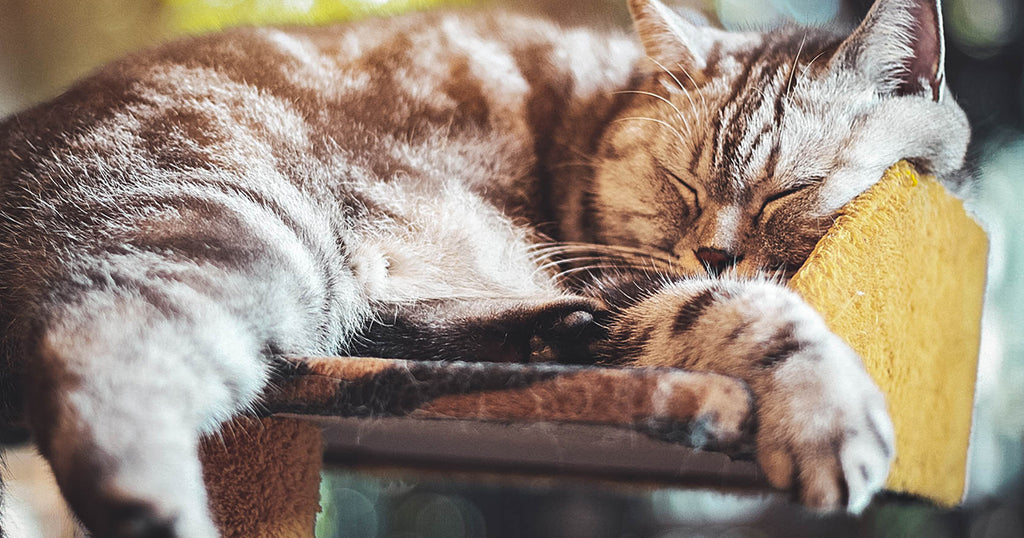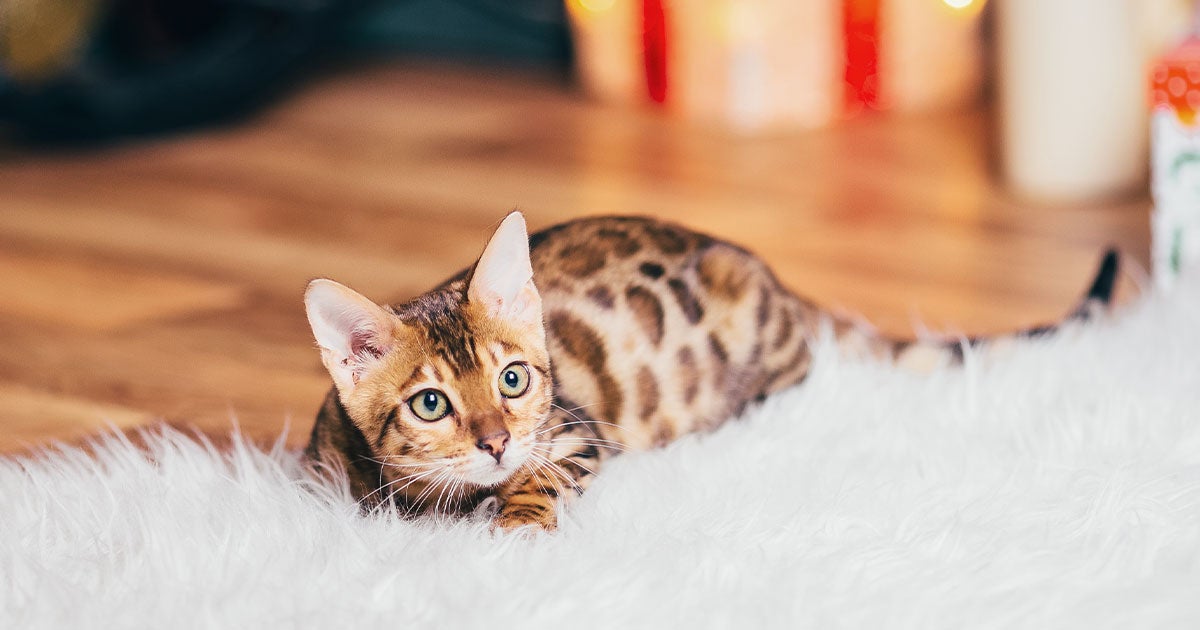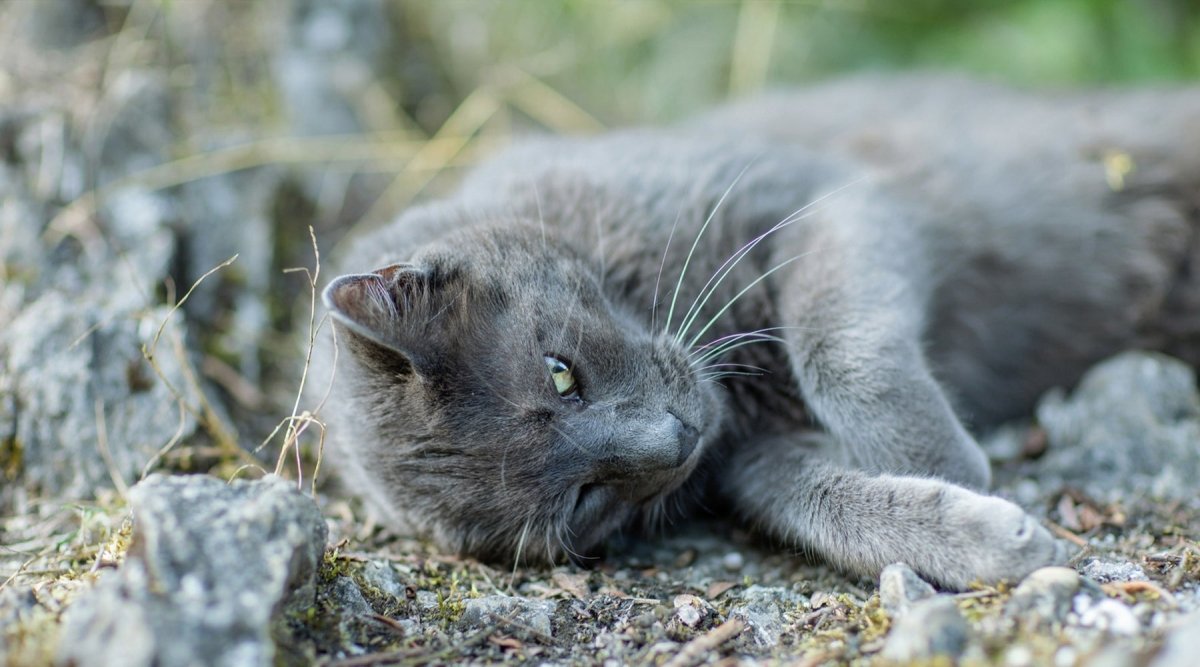Do you have a cat in heat that meows all the time? Or are you not sure how to recognize when your cat is in heat? In this article, we'll tell you about velvet paws that are ready to mate, their extroverted behavior and how you as a cat owner can do more than just stand helplessly by.
When are female cats sexually mature? On the trail of Mother Nature
Between the fourth and ninth month of life, female cats become sexually mature and are then ready to reproduce. This period is also known as estrus, heat, oestrus, rutting and heat. The technical term is estrus. It takes place several times a year and depends on the time of year and the amount of daylight. From 10 - 12 hours of daylight a day, hormones are released in the cat's body and the organism prepares for reproduction. During this phase, the follicles in the ovaries develop and ovulation is prepared. In cats, however, ovulation is only triggered when they are mated. This is different in dogs and humans.
During the reproductive period, the cat emits more pheromones, which are sniffed out by other members of the same species on the rear end. Male cats then know exactly whether the cat is in heat. This type of communication between furry friends is also known as chemo-communication. They use chemical markers through their body's own scents and thus reveal their state of health or signal to the male cat that they are ready to mate. Cats go into estrus about twice a year.
If the cat is not mated during estrus, it can even come back into heat several times during the mating season - even within a few weeks.
How long is a cat in heat?
1 to 2 days before coming into heat, the hormone balance of the velvet paw already changes and the oestrogen level is built up. Some female cats can already show behavioral changes during this phase.
The duration of estrus in cats depends on whether the velvet paw has been mated or not. In mated cats, estrus lasts between two and four days, but if there is no copulation with a male cat, the estrus phase can last up to 15 days.
After this, the females' willingness to mate decreases and their extreme behavior also diminishes. In the period from September to February, the length of the day also decreases and the cat's sexual cycle goes into hibernation.
How does a cat in heat behave?
Cat owners who have an unspayed female cat at home can tell you a thing or two about the changes in behavior of cats in heat. The cat's behavior changes abruptly. Cats in heat are focused on mating with a male cat and they signal this quite clearly.
They roll around wildly on the floor, hence the term "rolling", meow loudly several times a day, push themselves across the floor with their rump raised, are restless and are desperate to get outside to mate. Some cats even spread their urine around the home to mark their territory. They also mark humans by rubbing against their two-legged friends and leaving scent marks. Many cat owners also observe so-called claw sharpening, for example on walls and furniture.

In addition, many cats are particularly cuddly and seek to be close to humans. They also show little play instinct, so they first need to be motivated. During the cat in heat phase, cats can lose a lot of weight as they are no longer interested in food and ignore their food.
However, the behavior of a cat in heat is largely dependent on its nature. If the cat is more relaxed, it will also behave more calmly during the mating season. A temperamental cat, on the other hand, can become a tiger and even show aggressive behavior towards humans.
How can you calm a cat in heat in the short term?
Unfortunately, there are not many ways to calm a cat in heat. The most effective method is still neutering. If the mating season is excessively stressful for both the owner and the cat, neutering should be considered. Especially in cats that are ready to mate several times during the summer months without being mated, the extremely extroverted behavior can be very stressful.
If your cat in heat also eats very little, which can happen quite often, you can try to offer her tasty food and motivate her with her favorite snacks. Otherwise, severe emaciation can be life-threatening. In addition, you should avoid stressful situations for your furry friend and maintain a relaxed relationship with her.

Below we have put together some tips that can reduce the behavior of cats in heat. However, they are not usually long-lasting.
Short-term measures to alleviate the behavior of cats in heat:
- Don't let male cats near: If a cat in heat notices a male cat, his behavior can change abruptly. Males excite cats that are willing to mate and reinforce their behavior.
- Catnip: Has a calming effect and could relax your cat. Velvet paws love the smell of catnip and also like to eat it. Some cat toys already contain dried catnip, which can also help to calm your cat. The toy also distracts the cat and tempts it to play.
- Warmth: You can also calm your cat in heat. A warm grain cushion or an electric blanket set to a low setting will also have a relaxing and calming effect on your furry friend.
- Distraction: Awaken your cat's play instinct - you can try to distract them and keep them occupied. A scratching post is a must at this stage. This allows the cat to release its pent-up energy and literally get its claws out.
- Cat pheromones: There are also products with pheromones that have a calming effect on cats, but in practice the success is rather limited. However, every cat owner must try this out for themselves with their four-legged friend.
Conclusion
Cats in heat can be quite a challenge for their owners. Unfortunately, there are only a few ways to alleviate their sometimes very extroverted behavior. Neutering is therefore the only way to restore calm to particularly aggressive and agitated cats. After all, it is not only humans who may suffer during this phase, but above all the cat. They are stressed, restless and even go on a hunger strike in order to mate.
You can find out how you can help your cat if it is not eating and what other causes may be behind a hunger strike in our article Your cat is not eating? Tips and tricks for more appetite.



